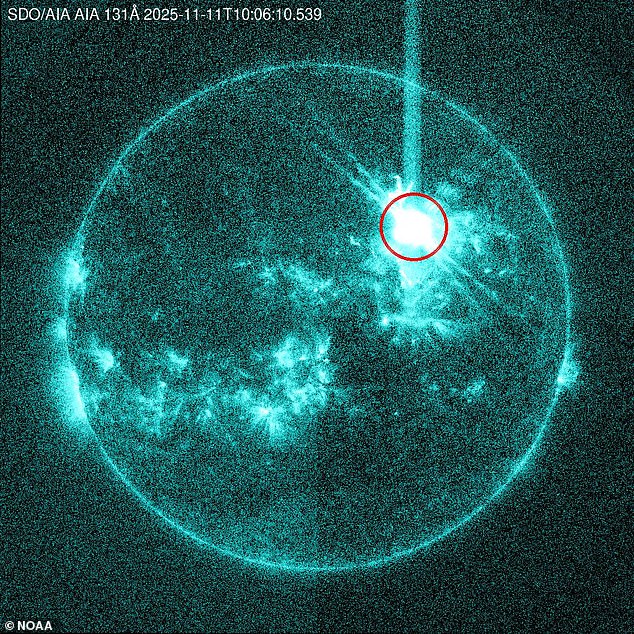Early Tuesday, our star put on a dramatic show.
A colossal solar flare, the most powerful of 2025 so far, erupted from the sun, sending waves of charged particles hurtling through space toward Earth.
Scientists are calling it an X5.1-class flare, a level strong enough to rattle satellites, disrupt high-frequency radio signals, and even influence some high-altitude flights.
Europe and Africa Feel the Impact
By around 5 a.m. ET, the flare had already caused a temporary radio blackout across parts of Europe and Africa.
Aviation, maritime operations, emergency services, GPS, radar, and satellite communications were briefly affected.
While most day-to-day tech users likely didn’t notice, the interruption served as a stark reminder of just how connected—and vulnerable—modern life is to solar activity.
A Radiation Alert in the Skies
Officials are now warning that high-energy solar particles are creating elevated radiation levels in certain areas.
Passengers and crew on polar flights could see a slight increase in exposure.
Low-Earth orbit satellites, particularly those traveling near the poles, may experience temporary electrical disturbances, which can affect both communications and navigation systems.
Tracking a Potential Coronal Mass Ejection
NOAA scientists are closely watching a possible coronal mass ejection (CME), a massive cloud of solar material and magnetic fields racing through space at roughly 3,000 miles per second.
If it heads directly toward Earth, the CME could spark a strong geomagnetic storm, potentially disturbing our planet’s magnetic field from late Tuesday night into Wednesday.
Another CME on the Horizon
A G3 Watch has also been issued due to a separate CME from November 10.
Officials warn it could reach Earth on the evening of November 11 and linger into November 12, prolonging the period of heightened solar activity.
This means that for the next couple of days, space weather experts will be on high alert, monitoring conditions that could affect both technology and power grids.
Sunspot AR4274: The Source of the Storm
All of this activity is linked to sunspot AR4274, a dark, cooler region on the sun’s surface that has been unusually active.
Just in the past few days, it has already produced two other major flares on November 9 and 10.
Sunspots, while temporary, often serve as the birthplace of these massive solar eruptions.
Scientists Call It Rare and Powerful
Space scientist Steph Yardley described the flare as “not very common.”
The energetic particles are so strong that ground-based detectors can pick them up.
Since 1942, only 75 flares of this magnitude have been recorded, highlighting the unusual intensity of this solar event.
What Happens Next
Scientists continue to monitor the situation, warning that effects on satellites, radio communications, and even power grids could persist for the next couple of days.
For now, sky-watchers and tech teams alike are keeping a close eye on the sun, hoping that Earth weathers the storm without major disruption.
